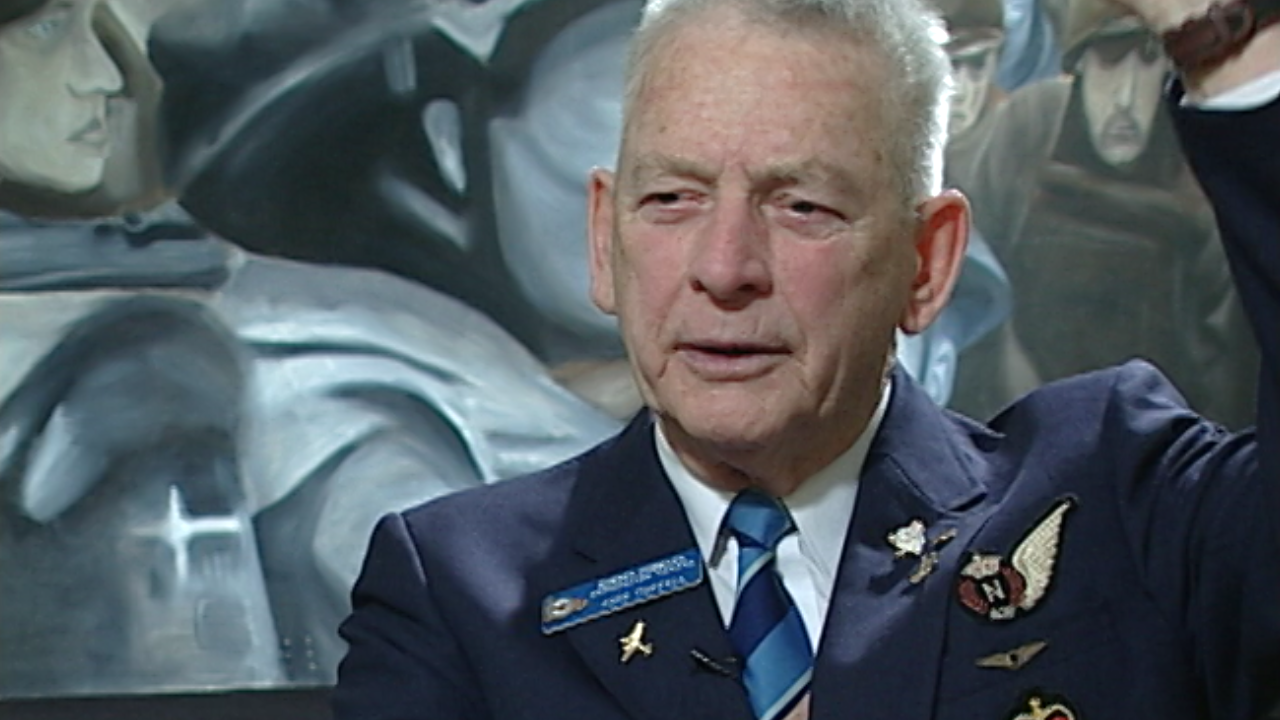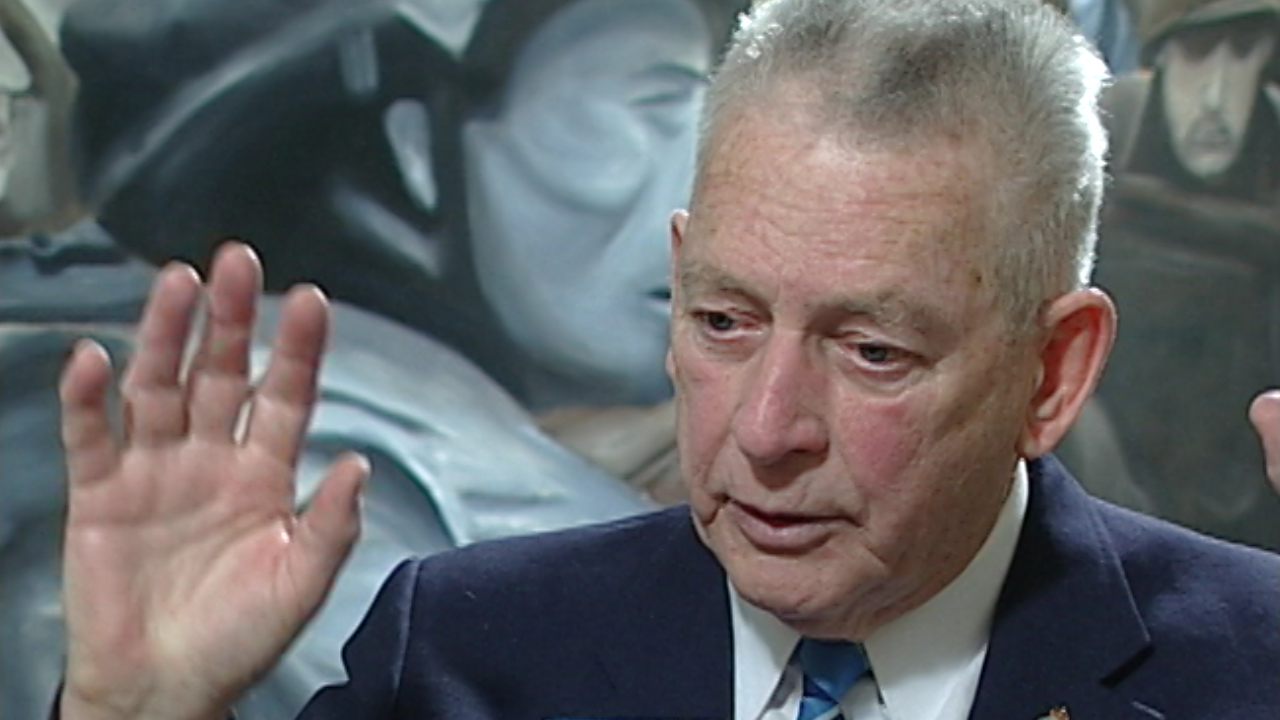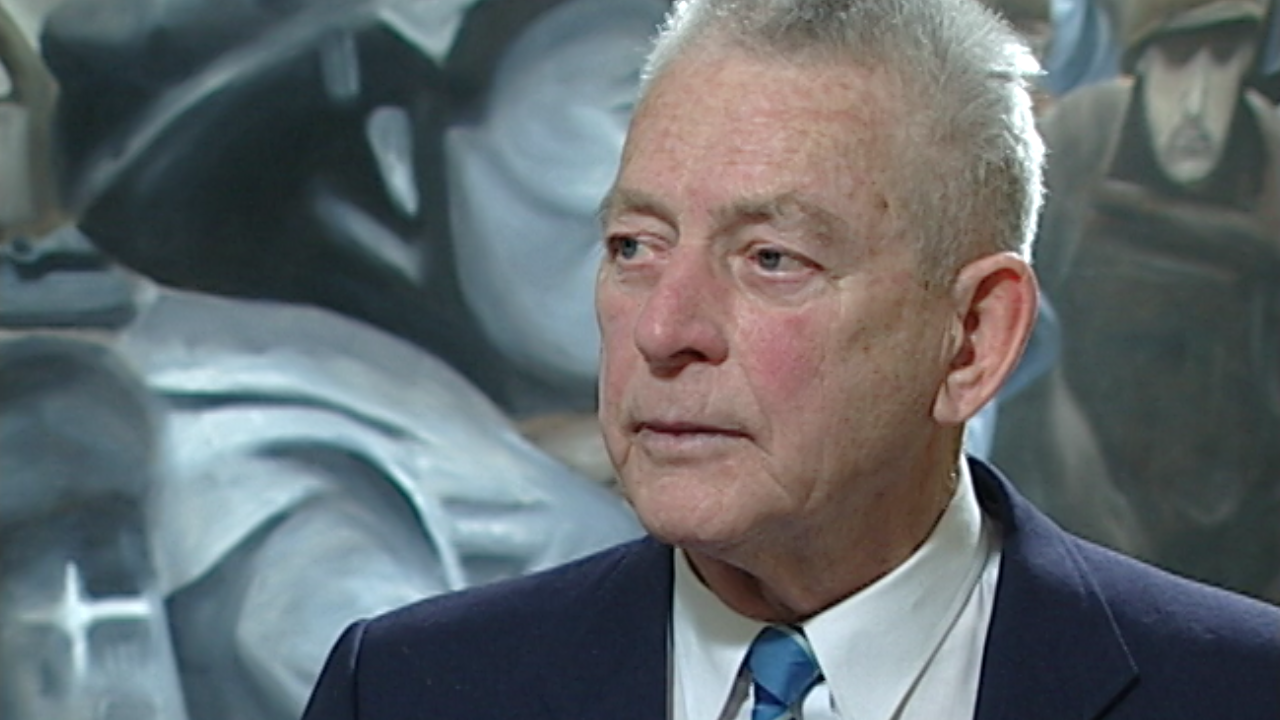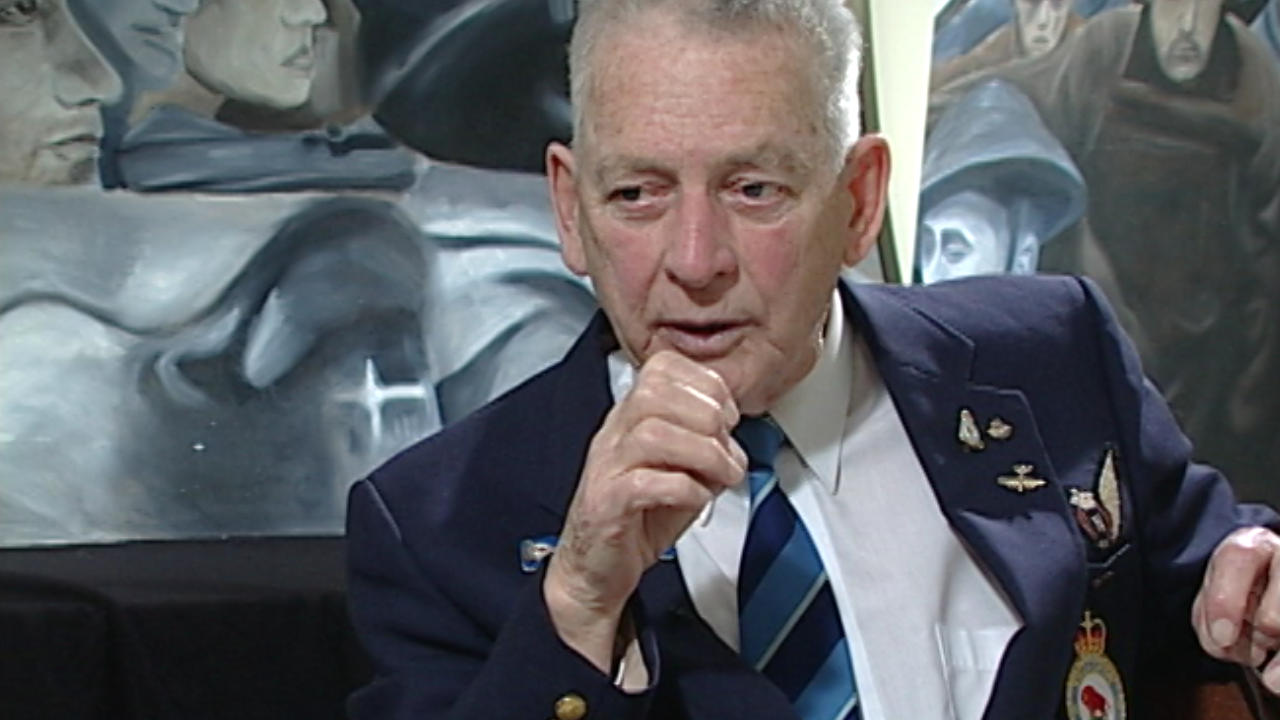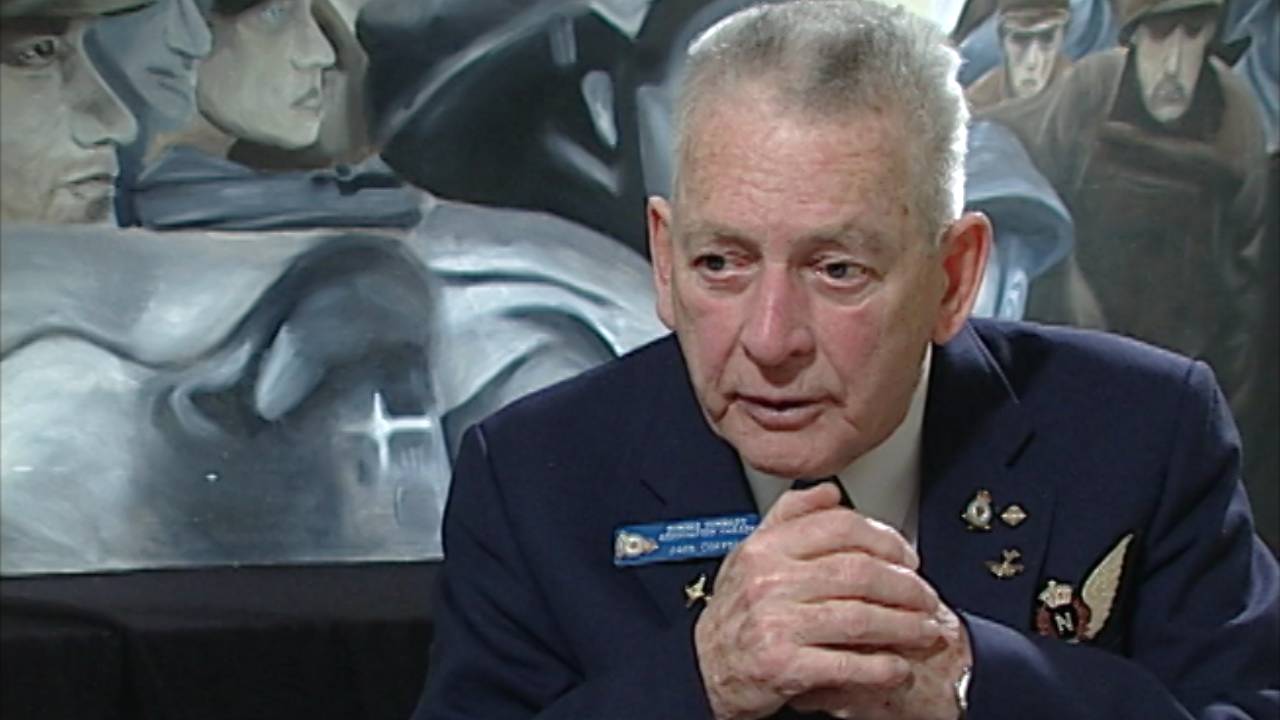Flying on course; for better or worse.
Heroes Remember
Flying on course; for better or worse.
Transcript
We would never take such a direct route anyway. We'd always go
around somewhere. But, because if you do that, you're just
inviting all the fighters to meet you halfway so, but, I'm just
saying just for the sake of argument at this moment. And so the
way point, let's suppose that the way point is picked to be that
tip of that, of that land and then, you must not deviate from
that ever. No, absolutely not. Because, there's all kinds of
other activities going on, there might be a whole bunch of, not
Americans because they didn't fly at night, but there may be
all kinds of other air planes doing all kinds of other things.
You might crash into them, or you might do all kinds of things.
In other words, as the main bomber stream, you had that whole
corridor assigned to you for that night, at that altitude, at
that, 25,000 feet and at, and that course, and so on and so forth
And everybody else was warned to stay out of it. And of course,
what they always tried to do was fool the Germans by doing some
such things as bullseyes, as we talked about a moment ago, in
other words, sending groups of air planes out there when you
were in fact was, were going down here, et cetera, et cetera.
There's one small problem and that is, and this happened,
didn't happen to us, but we saw it and we felt the, felt the
reverberations from it. What happened, one, one night, this
actually happened, it was all clouded and we were flying in and
out of cloud, and so on and so forth, at something like, oh only
2,000 feet or something. And this was the target, this was the,
the way it was to be done, and sure enough, a guy just ahead of
us had done exactly that, the dogleg. The, the, yeah, the time-
wasting triangle. And so he came down like this, and he went down
like that, and when he got here, lo and behold, one of his own
buddies was, had, was coming along straight, and so at the
perfect time they met over the coast and two, two air planes
with 12 tonnes of bombs went up all at the same time. And we
were, I guess, three or four miles from that, we saw it and it
took our air plane and went whoooff. Oh yeah, the, the, the
shock, the, the, the... I'm, my words, my Alzheimers... Anyway,
the shock of the, of the explosion took us off our course,
and so on and so forth, momentarily. So, it was a pretty
frightening experience.
Description
Mr. Coffell describes the need for disciplined flying regardless of the consequences.
John ( Jack ) Coffell
Mr. Coffell was born June 1, 1924, in Moncton, New Brunswick. At the age of two, he lost his mother. His family moved to Amherst, Nova Scotia, where he lived until he enlisted. With his father unemployed, and an unemployment rate of 50 percent, he was dertermined to pass Grade 11 so he could enter the Royal Canadian Air Force. He eventually qualified as a navigator and went overseas to join 429 Squadron, 6 Group. Mr. Coffell's theatre of duty was Northern Europe. At the end of his service overseas, he returned to Canada aboard the Queen Mary.
Meta Data
- Medium:
- Video
- Owner:
- Veterans Affairs Canada
- Duration:
- 03:00
- Person Interviewed:
- John ( Jack ) Coffell
- War, Conflict or Mission:
- Second World War
- Battle/Campaign:
- Bomber Command
- Branch:
- Air Force
- Units/Ship:
- 429 Squadron
- Rank:
- Flying Officer
- Occupation:
- Navigator
Related Videos
- Date modified:



